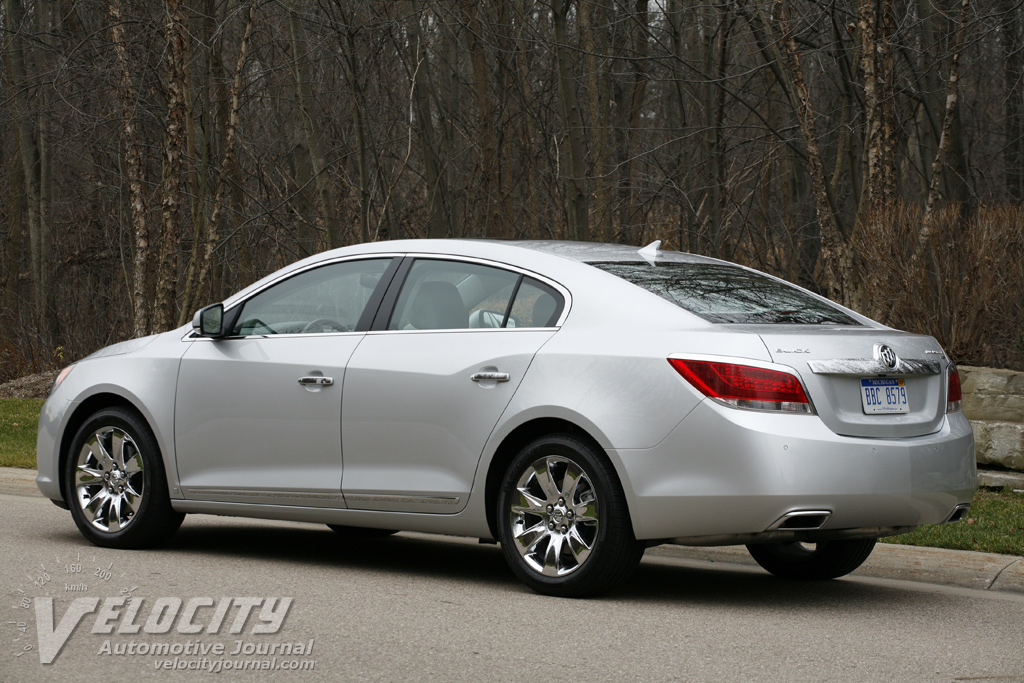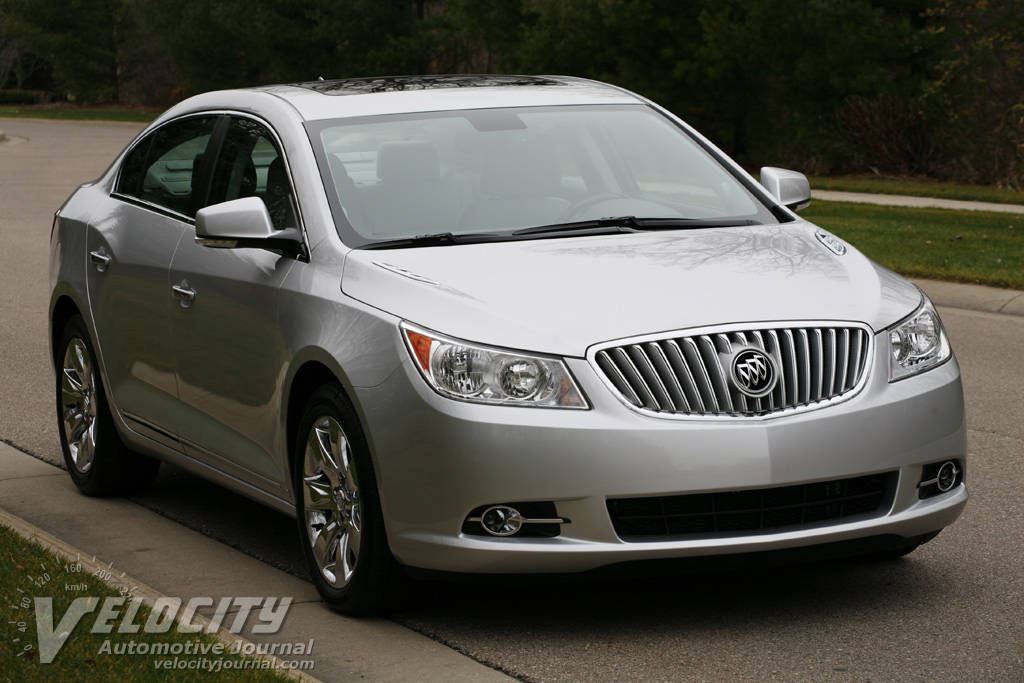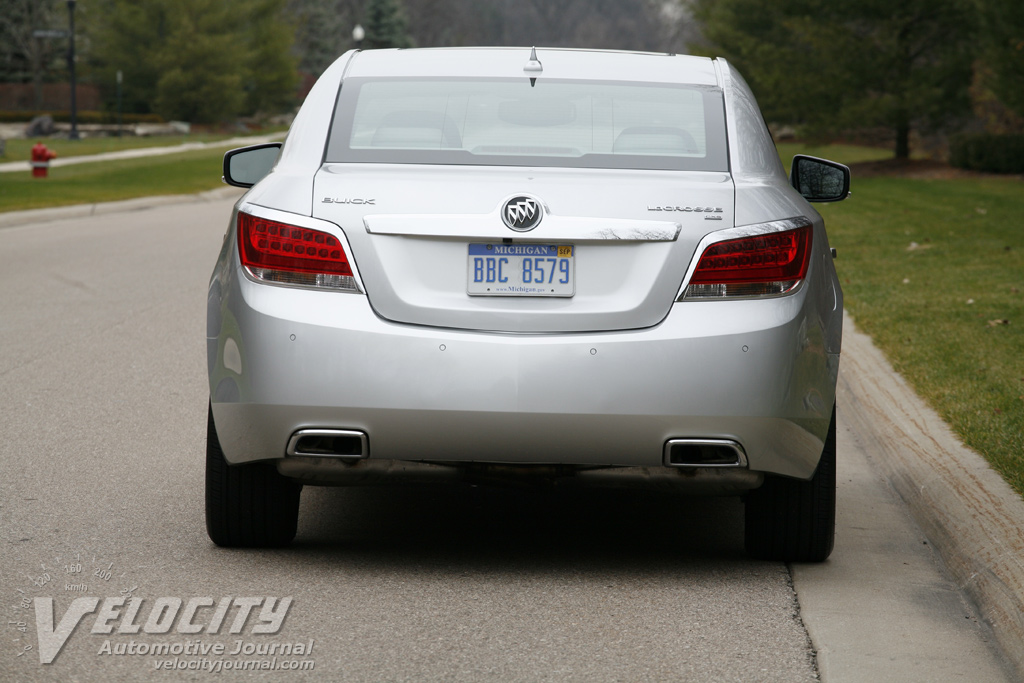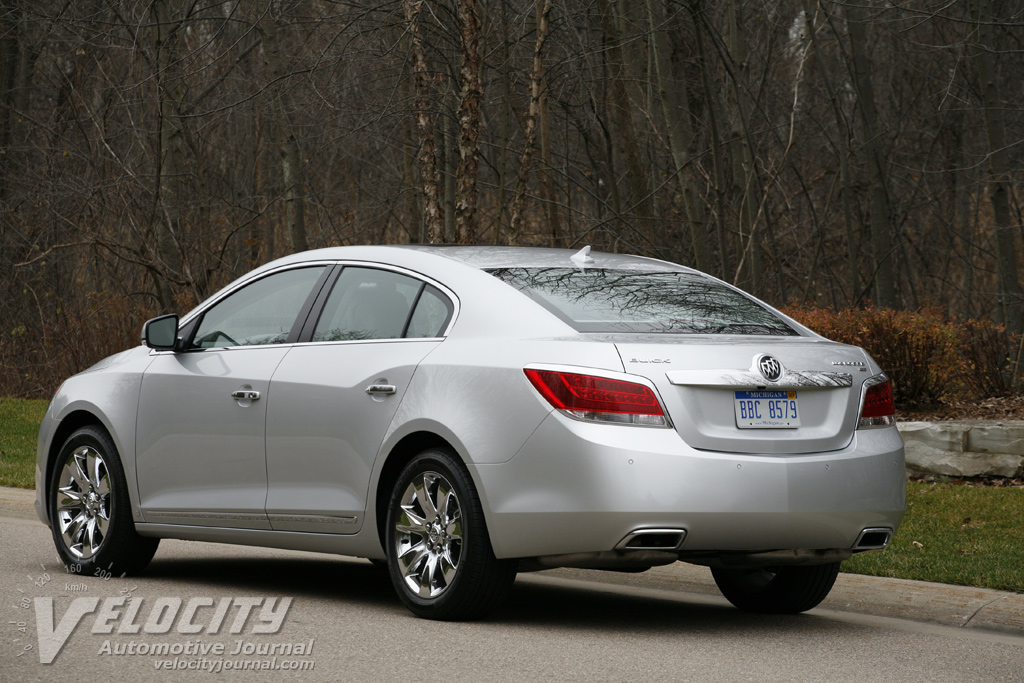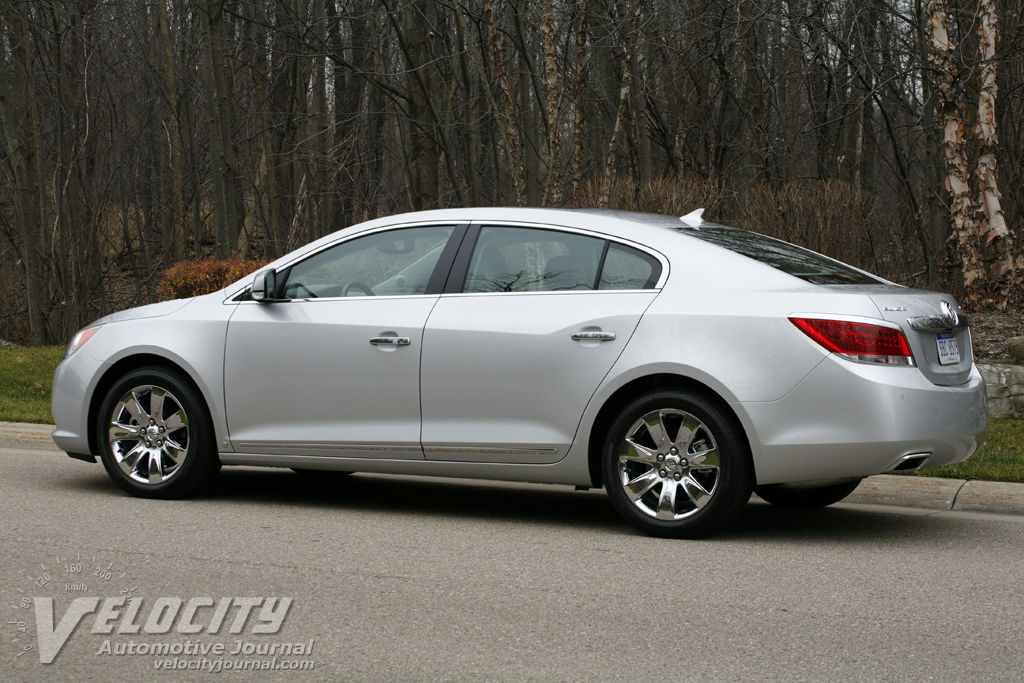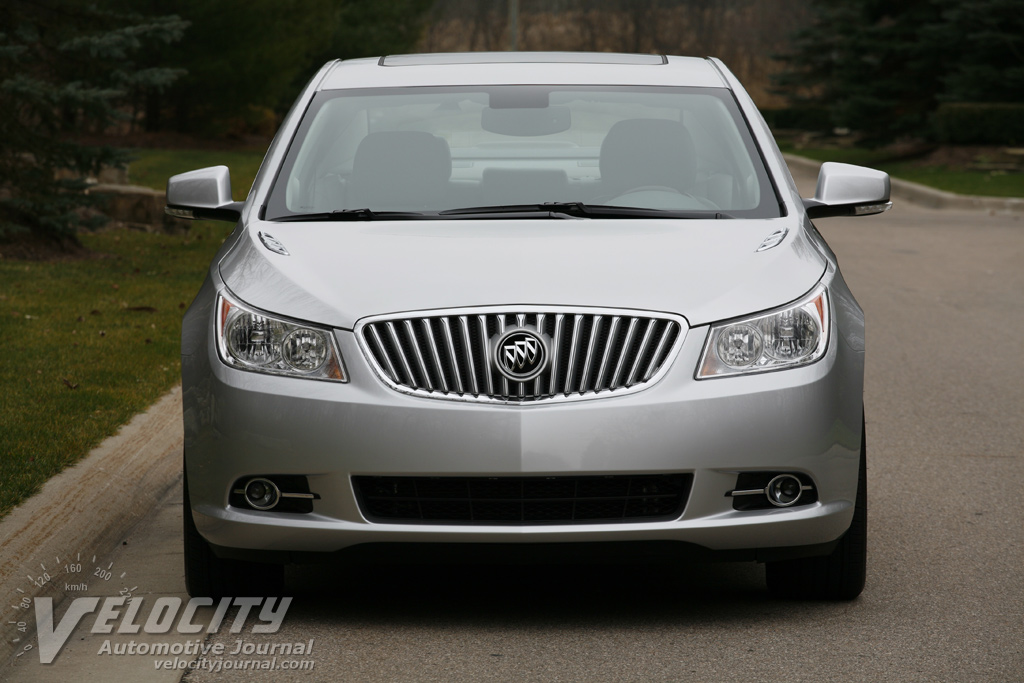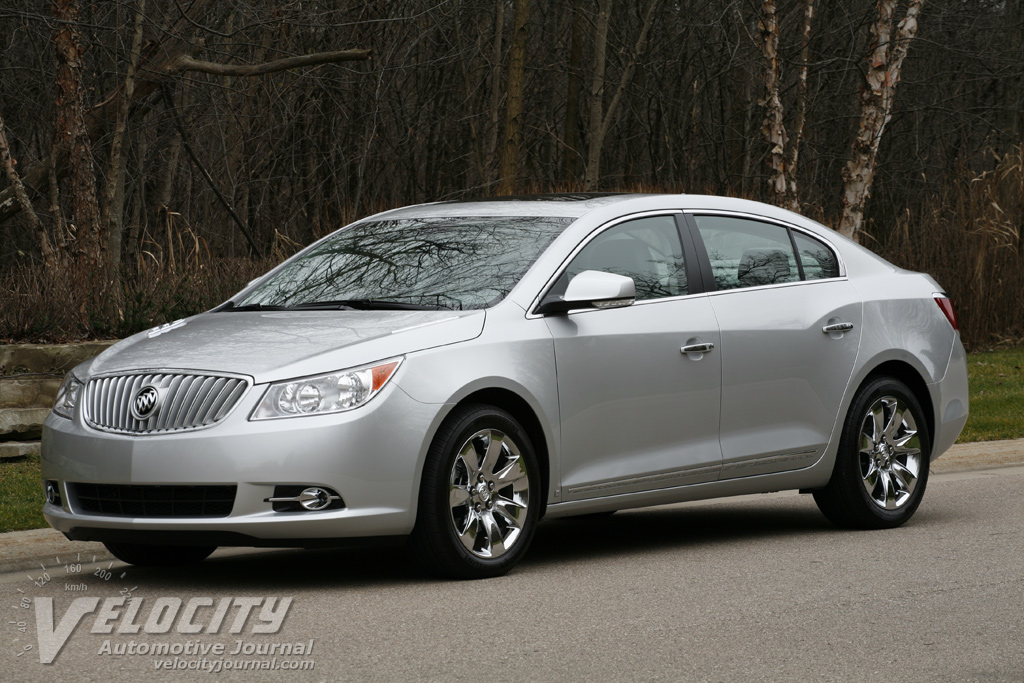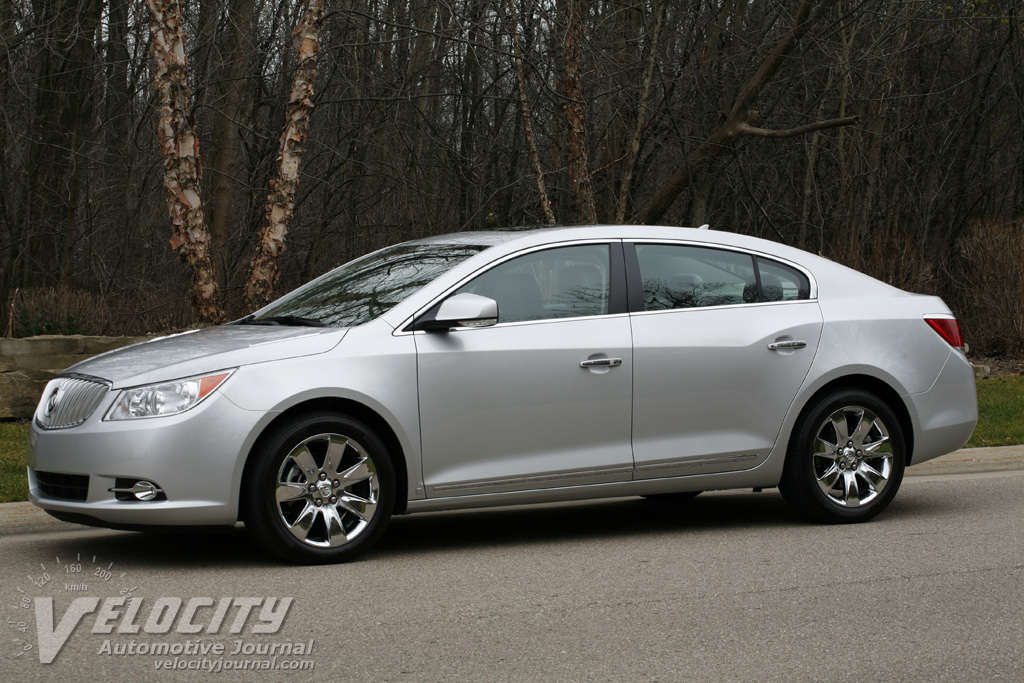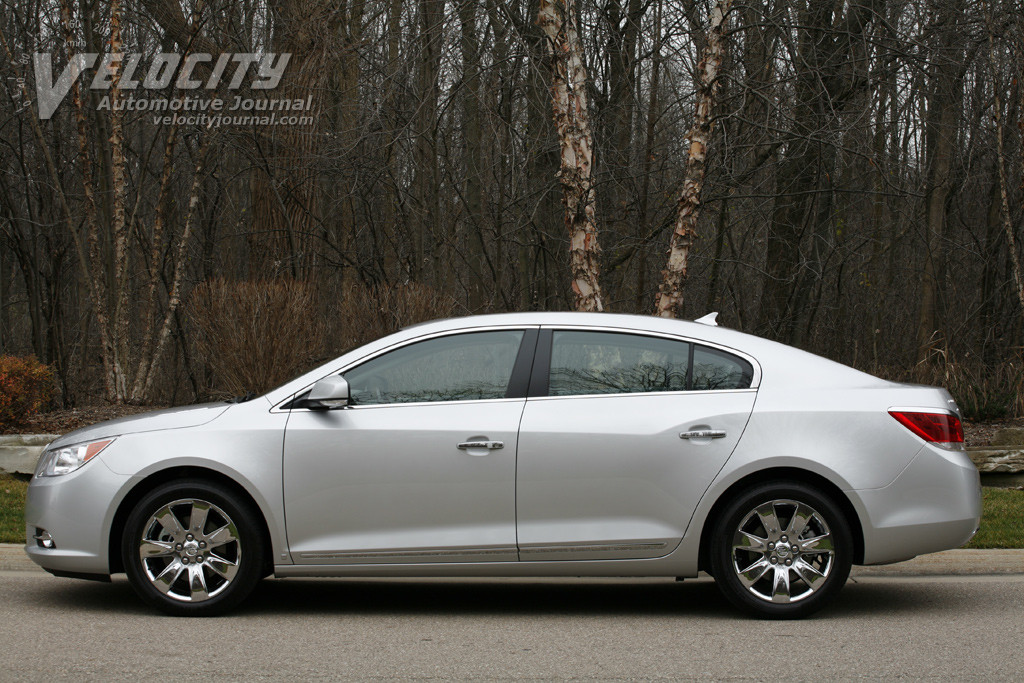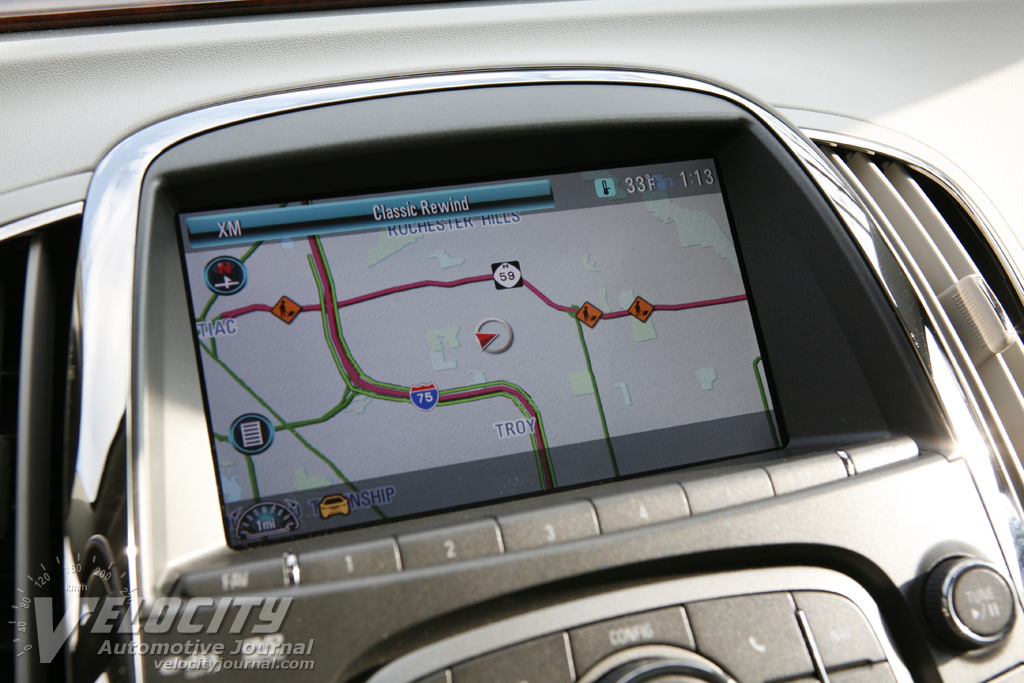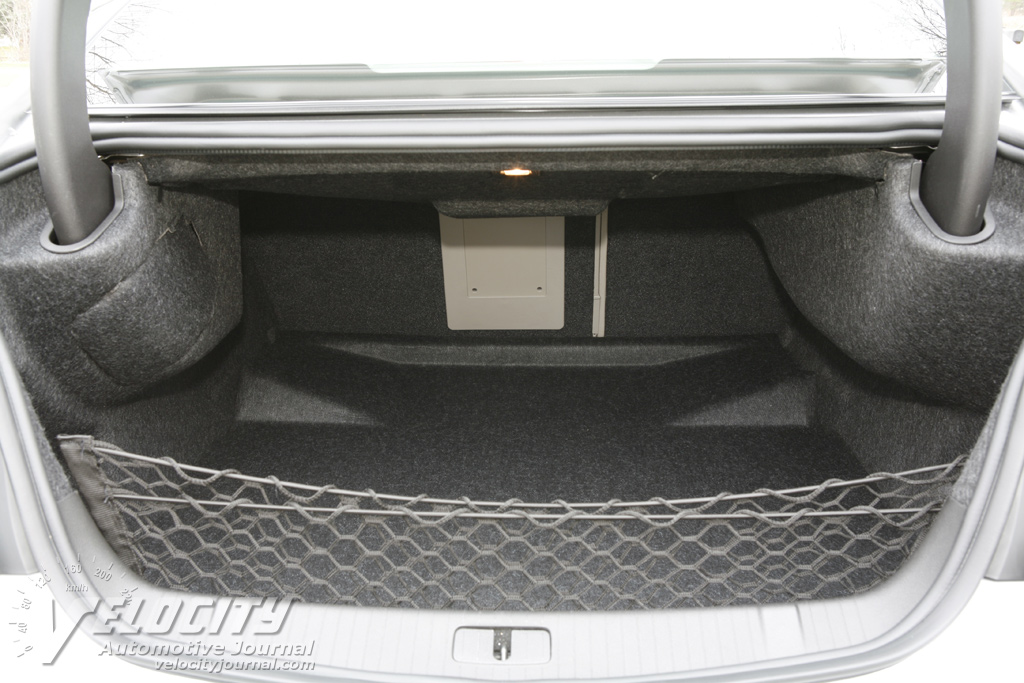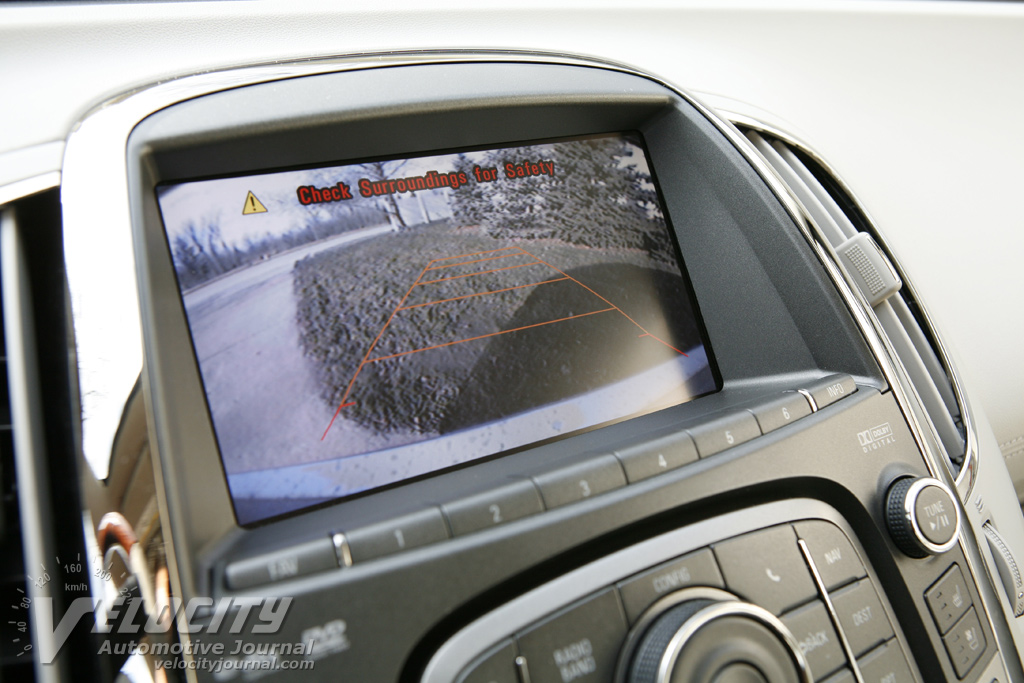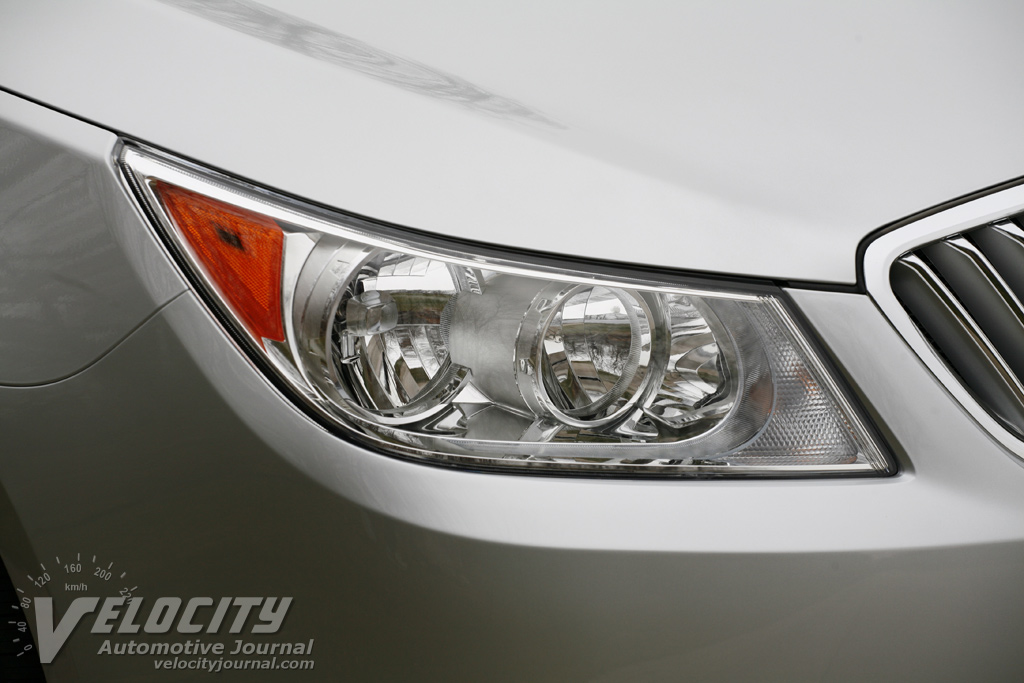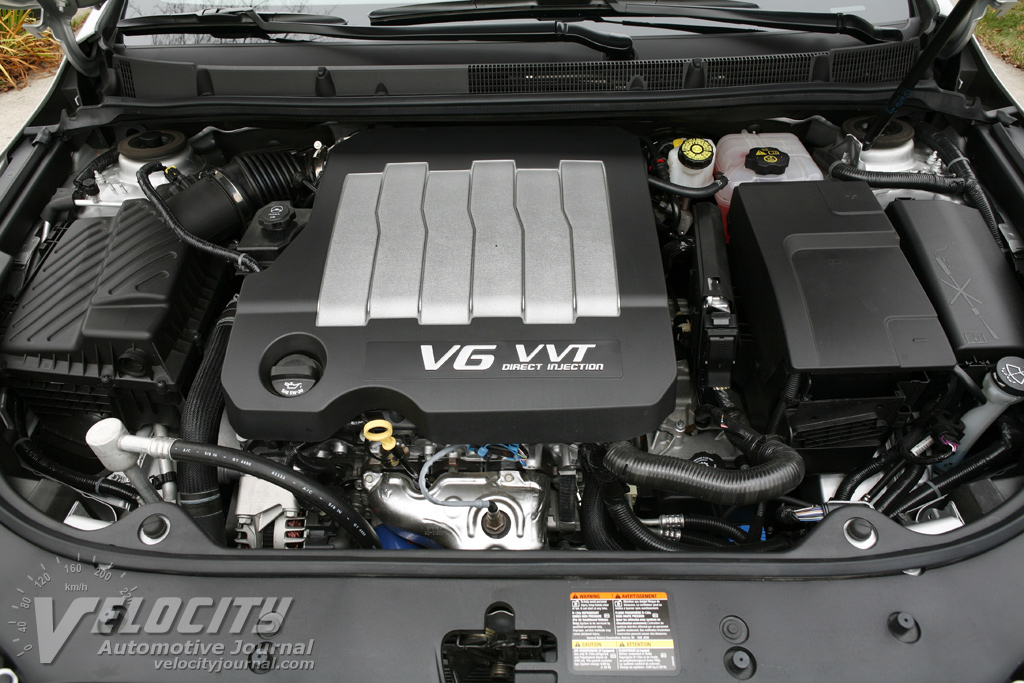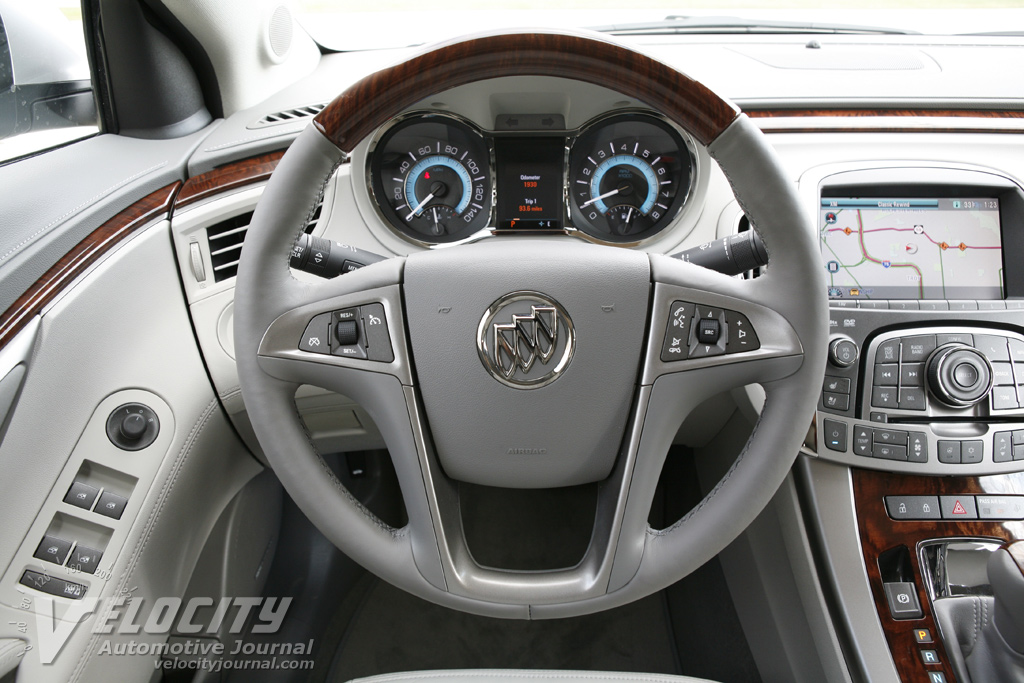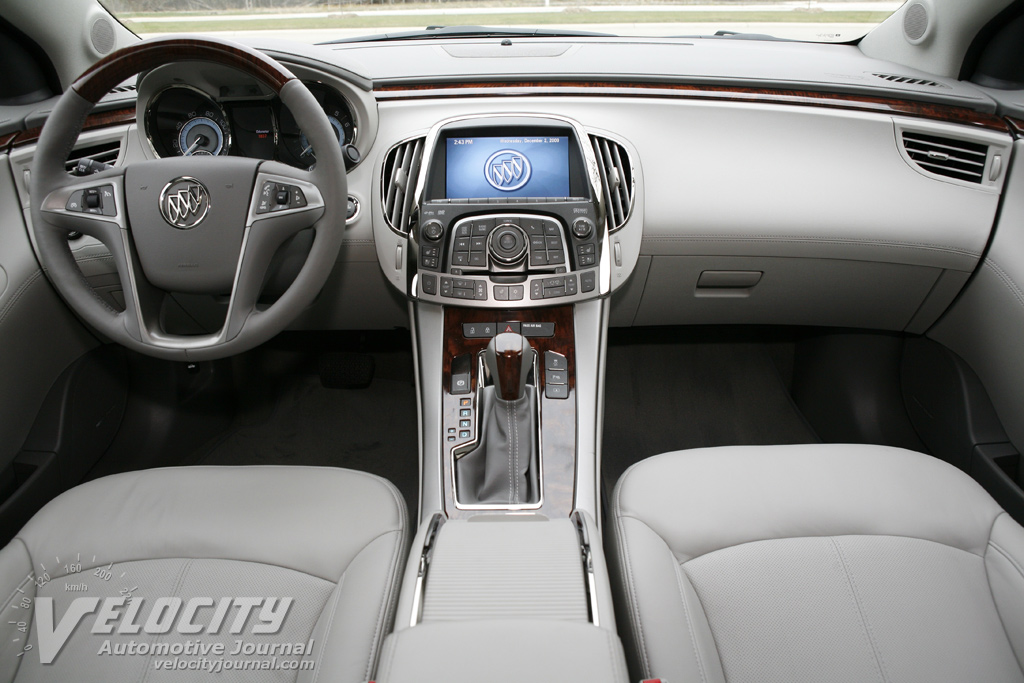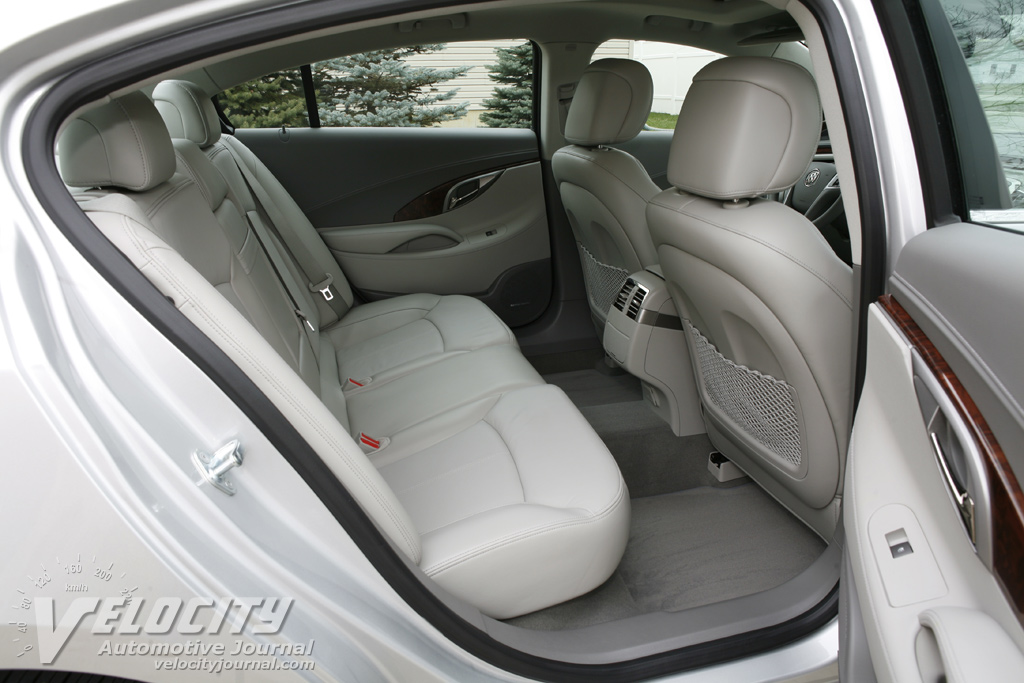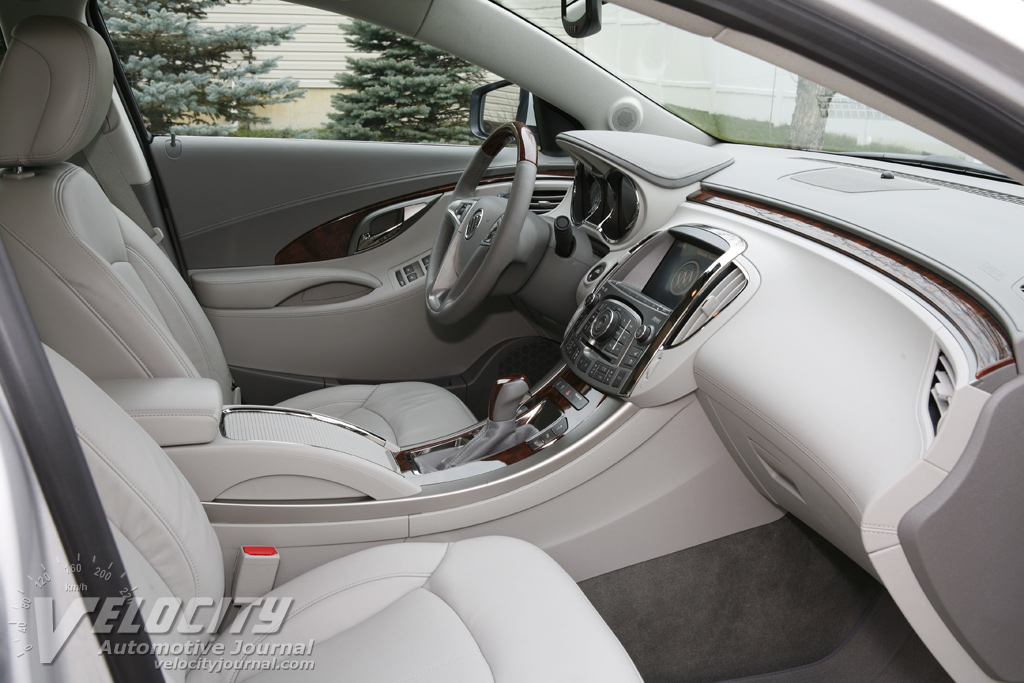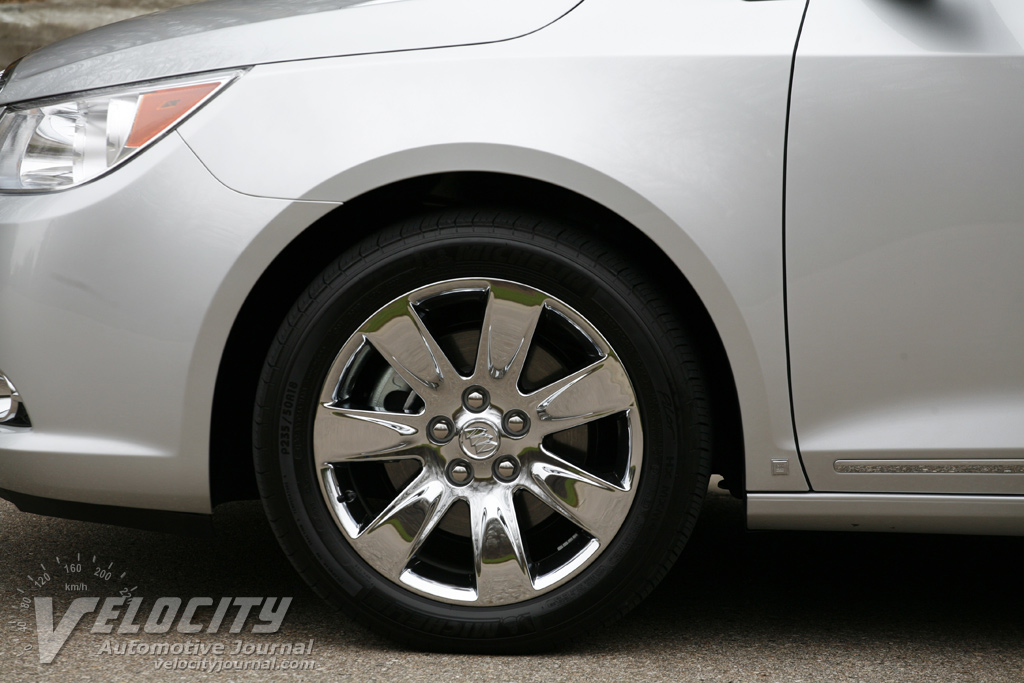2010 Buick LaCrosse CXS
12/23/2009
Shahed Hussain
When Buick first introduced the LaCrosse in 2005, it replaced the long-running Regal and Century models. However, the first LaCrosse was an interim solution until Buick could engineer a competitive midsize entry luxury sedan. The return of the Regal in early 2010 allows Buick to position the new LaCrosse against cars like the Lexus ES350, Lincoln MKZ, and Hyundai Genesis.
Buick offers the three trim levels: CX, CXL, and CXS. At the bottom of the range is the CX, which starts at $27,085; the midlevel front-wheel drive CXL is $29,645, or $31,820 with optional all-wheel drive. Both the CX and CXS are powered by a new 255-bhp 3.0L V-6. The top model is the $33,015 FWD-only CXS, equipped with a 280-bhp 3.6L V-6. The omission of an AWD option for the CXS is surprising, since the higher power V-6 could benefit the most from the handling and traction advantages of all-wheel drive. We tested a LaCrosse CXS equipped with the $1,995 Audio/Navigation system plus backup camera, and the $995 power sunroof. Adding the $750 destination charge brought the total sticker price to $36,755. Other available options include the Touring Package ($800), Heads-up Display ($350), Xenon headlamps ($695), and Rear Seat Entertainment System ($1,295). Given our sporting tendencies, the Touring Package with the 19-inch wheels, P245/40R19 tires, and adjustable dampers seems an obvious choice. We would also select the Xenon HID headlamps for their superior clarity at night. With our preferred option packages, the sticker price would balloon to $38,600, but deleting the navigation system and sunroof would bring the bottom line down to a more reasonable $35,610.
The LaCrosse offers a pleasant departure from the bland interiors that dominated recent Buicks. Materials and build quality is competitive with the class leaders, while the sweeping curves across the dash and center console lend a distinctively modern appearance to the interior. The 4-spoke steering wheel, wrapped in leather, includes audio and Bluetooth phone controls on the spokes. Digits on the 140-MPH speedometer and 8,000 RPM tachometer are clearly legible day or night. A high resolution driver information display between the gauges shows fuel consumption, odometer, transmission mode, and other vehicle status data. An optional Harman Kardon 384-watt AM/FM/XM/CD audio system has 11 speakers and a 5.1-channel surround system.
Standard perforated leather seats are soft, yet supportive; the bolsters are sized to accommodate most physiques, but do not give much lateral support. Both front seats are heated and cooled, although in December we only used the heaters, which warmed up the seats quickly. The LaCrosse provides above average accommodations for rear passengers, with exceptionally generous legroom. The rear seats are contoured for good support and comfort. However, the sloping roofline restricts headroom for occupants over 6-ft. tall.
As with most contemporary luxury sedans, the center stack is dominated by a vast array of buttons and knobs for the audio, navigation and climate controls, all monitored via a crisp, high resolution display on the center stack. A console-mounted button activates the rear sunshade to shelter rear passengers from the sun. Dual cupholders are hidden under a sliding lid between the front seats. Underneath the center armrest is a storage compartment and 12V power outlet. A spear of glossy wood-grain trim spans the dashboard; more simulated wood is inlaid on the door panels and on the center console. Buick's decision to use imitation wood trim is an unfortunate oversight, since genuine veneer is standard on the Lexus ES350 and Lincoln MKZ.
The LaCrosse CXS gets a direct-injection 3.6L V-6 with 280-bhp @ 6300 RPM and 259 lb.-ft. @ 4,800 RPM; this V-6 is also shared with the Cadillac CTS. LaCrosse CX and CXL models are powered by a new 3.0L V-6 with 255-bhp/215 lb.-ft.; choosing the AWD CXL drops power output to 252-bhp. In 2010, a 2.4L inline-4 will become the base engine in the LaCrosse CX. The 3.6L endows the CXS with effortless acceleration and impressive midrange response. Throughout the rev range, the V-6 remains smooth and refined; at full throttle engine noise becomes noticeable, but never intrusive. Torque steer has been tamed, so even mashing the gas pedal causes no more than a minor tug at the steering wheel. EPA fuel consumption ratings for the 3.6L are 17/27 MPG (city/hwy.); our mixed urban and highway driving yielded just over 20 MPG. Surprisingly, the smaller 3.0L V-6 in the LaCrosse CX and CXS achieves identical EPA numbers as the 3.6L; adding AWD drags down the EPA ratings by one MPG for both the city and highway. In contrast, the new 182-bhp Ecotec 2.4L debuting in the LaCrosse CX should get an impressive 20/30 MPG (city/hwy.) according to preliminary EPA certification.
All LaCrosse models are equipped with a 6-speed automatic transmission. As is the norm for GM automatics, shift quality is superb, even at full throttle acceleration. A deep prod of the gas pedal will cause the gearbox to hesitate momentarily before it kicks down two ratios. Slipping the gear lever into the manual mode allows more direct control, but the transmission does not shift noticeably faster.
Buick uses the typical MacPherson struts, coil springs, twin-tube dampers, and a tubular stabilizer for the front suspension. At the rear, is a 4-link layout (CX) with coil springs and dampers, or alternatively an "H"-arm suspension (CXL, optional on the CXS). Disc brakes are at all four corners, with standard ABS and StabiliTrak stability control. The brakes are certainly adequate, but pedal feel is nearly nonexistent. Hard braking results in significant dive due to the softly sprung suspension. Our CXS test vehicle was equipped with P235/50R18 Michelin Pilot HX MXM all-season tires. The optional Touring Package substitutes P245/40R19 tires and adds real-time damping and an "H"-arm rear suspension.
The LaCrosse retains the cushy ride that has become synonymous with Buick, but without compromising straight-line stability. Driving enthusiasts should seriously consider the Touring Package, but most other owners will likely appreciate the comfortable standard suspension tuning. On a winding road, the LaCrosse handles competently, but makes no pretense of being a sport sedan. The Michelins were pleasingly quiet but struggled for traction in near freezing temperatures, even under moderate acceleration. Understeer at typical cornering speeds is minimal; the LaCrosse turns-in obediently without excessive body roll. Despite variable effort steering, the overly boosted rack-and-pinion steering lacks feedback and road feel.
With a completely redesigned LaCrosse, Buick finally has a credible alterative to the Lexus ES350, which is arguably the benchmark among entry luxury sedans. It doesn't hurt that the LaCrosse costs thousands less than the ES350, depending on equipment levels; the LaCrosse could actually siphon off some customers from Lexus, especially considering that a heavily optioned LaCrosse CXL is available for under $36K. Nonetheless, we aren't so sure that the premium CXS is worth the extra money over the CXL, especially since both models can be equipped nearly identically. But aside from a few minor criticisms, the LaCrosse is no doubt the finest sedan in Buick's lineup and compares favorably to any other car in its class.

